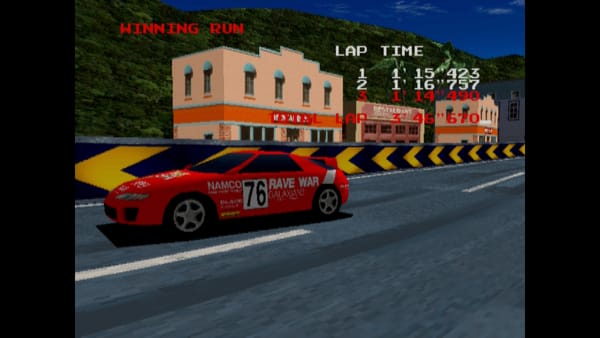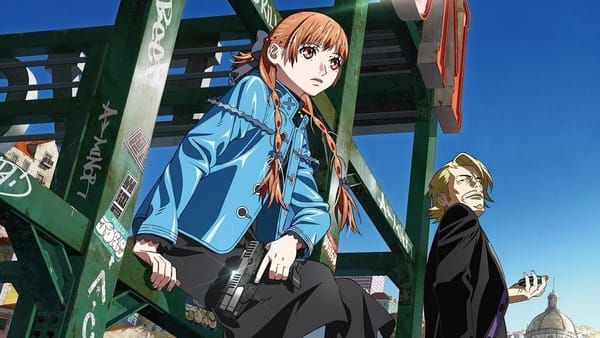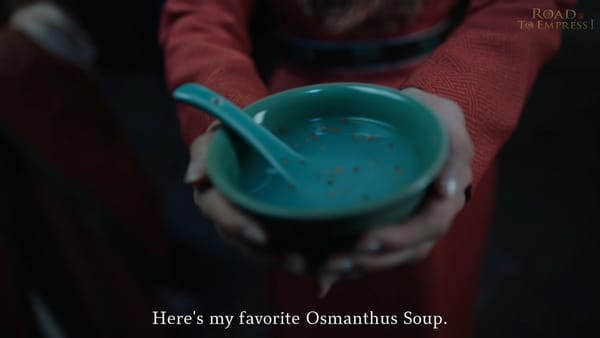Mahjong Stuff in Pon no Michi, Episode 0: Starting from the names
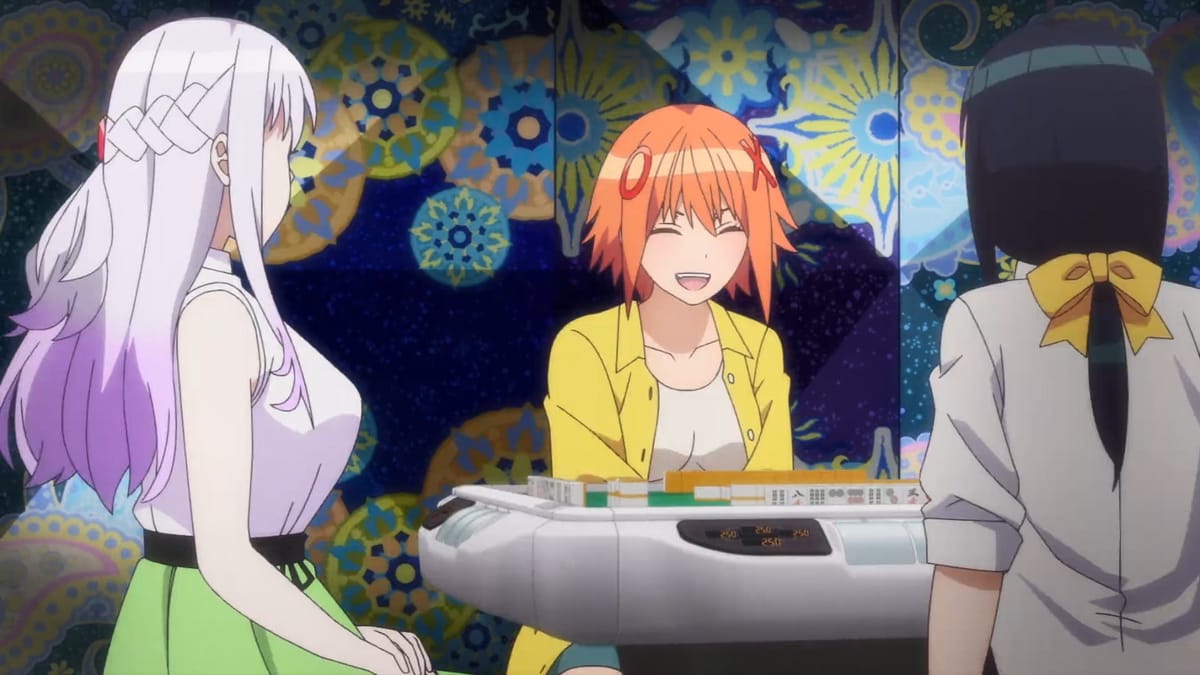
I had been looking forward to Pon no Michi (The Way of Pon), or perhaps I was looking forward to what I thought Pon no Michi might have made happen. Anime series about niche interests always bring new converts into the fold— I was myself inspired to learn mahjong by Fukumoto’s Akagi— and the “cute girls take up a hobby” genre is the one most known for inducing what we'll call the K-On effect. Between Saki and Mahjong Soul, I don’t think half the English-speaking scene would be here if it wasn’t for anime girls.
But unfortunately, Pon no Michi was not picked up for English streaming in the States by anybody. (I watch it using English subs from Chinese streamer Bilibili.) I can’t stress enough how exceedingly weird and rare this is in today’s anime scene. Almost everything gets subbed and streamed. The super-local bar comedy Snack Basue is being streamed. Weirdo shorts meant to advertise Japanese slot machines get streamed. Pon no Michi got really unlucky. Like dealing the last North into kokushi musou unlucky. Like riichi on a three-way wait losing to a thousand-point hand waiting on 6-pin kinda unlucky. You know, that hit-by-lightning kind of bad luck.
But on to the point of this series. I’ve been playing riichi mahjong for quite a while and I think I’ve become pretty uniquely experienced and knowledgeable in that time. And I’d venture to say there aren’t too many English writers out there who are deeply familiar with riichi and its terminology, much of which we just carry directly over from Japanese and use freely, sounding like my Kawaiikochans.
So I thought it would be fun to play “mahjong consultant” on Pon no Michi, both in terms of explaining its mahjong-specific jokes to you and in terms of correcting— to the best of my limited Japanese ability— the official subs, which I have noticed totally blow it on all mahjong terminology. And some of it is pretty tough; ideally you'd need a real "mahjong consultant" to help out on a show like this, but those aren't the circumstances these translations are cranked out in.
The first of these entries is going to be a free post, so that you can see I know what I'm talking about. However, all the rest of the project is for paid subscribers only. Sorry, I tried it the other way around with Daily Dracula X, it was my most-read project, and nobody subscribed. The first paid post, which will go up with this one, will be about the first episode and is quite lengthy. Future posts will probably combine multiple episodes together and be much shorter, as the amount of mahjong content drops drastically in favor of more traditional "cute girls do nothing" storylines.
Character names
Before we even get to the content of the show, it's worth pointing out that most of the characters have names derived from mahjong terminology or which at least relate to the game.
Jippensha Nashiko

“Nashi” just means “not” or “nothing”, and in mahjong people sometimes say “nashi” when you don’t have a yaku (winning hand requirement) or dora (bonus point tiles). I think this goes pretty well with Nashiko’s general loser temperament and her status as the most likely person in the group to try and win a hand without yaku. Her family name could be interpreted as someone who drifts between homes, which matches up with the setting; her mom kicks her out of home because she’s so annoying, and she settles into the vacant mahjong parlor her dad owns as a hangout.
Kawahigashi Pai

In mahjong, “pai” or “hai” means “tile”. Pai also has the “east” kanji in her name, the same one that appears on the East tile. (東)
I will bravely note that “pai” also means “boobs”; Pai is, along with all the rest of these characters, rather busty. I would have a tough time believing this was unintentional. I was surprised by the Pon no Michi spinoff comic in Young Magazine, which ages up the characters ten years, adds a guy, and immediately starts getting them naked. Well, anyway…
Tokutomi Izumi
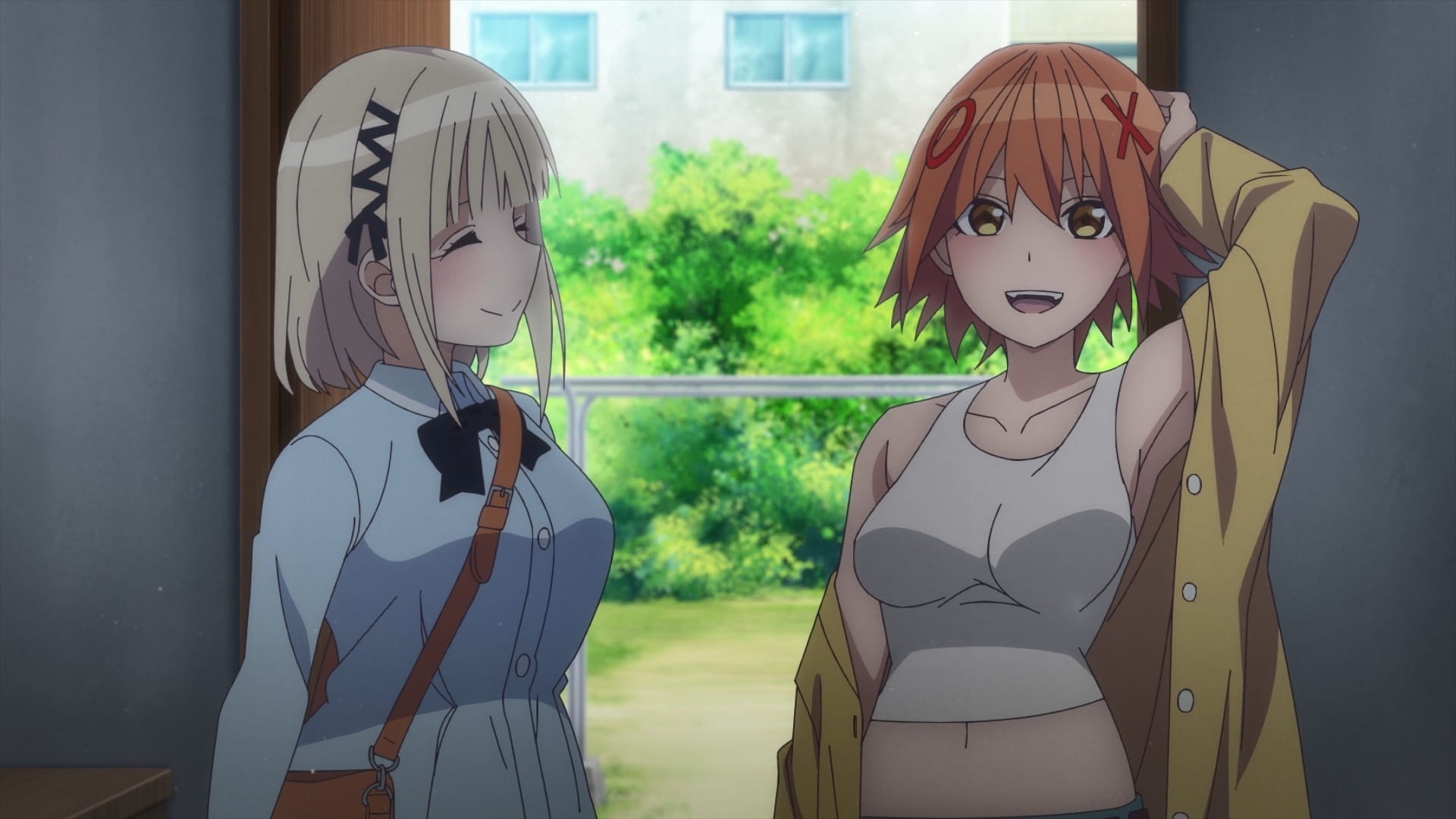
Going to the kanji, we find that while the name does not actually contain any direct references to mahjong, the three kanji that comprise it (徳富 泉) add up to something like “a wellspring of good fortune.” A blessed name for a gambler, and Izumi has some prior experience and an enthusiasm for the game.
Hayashi Riche
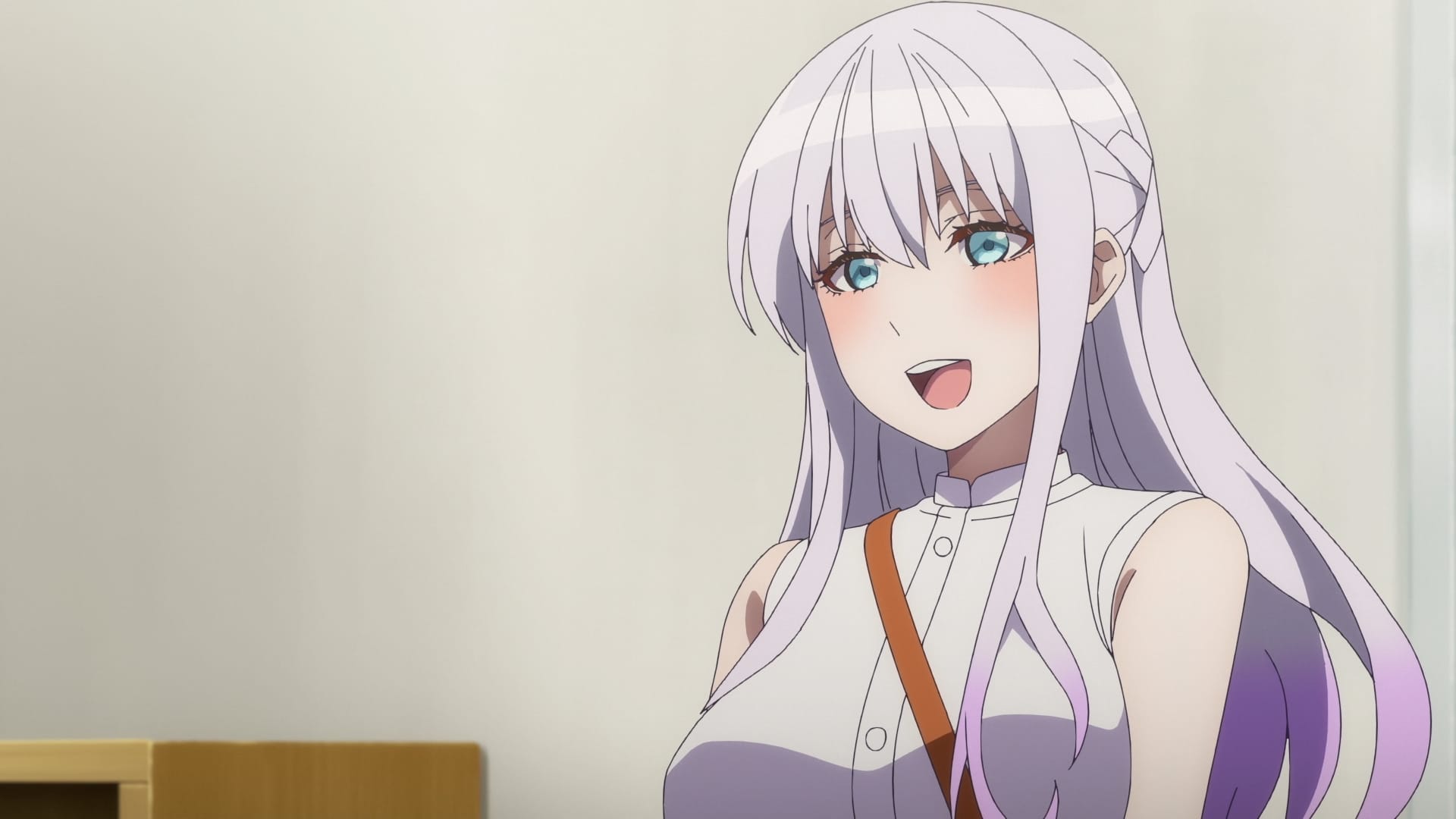
This is one even the show makes pretty clear; people in the show make note of how weird a name it is. “Riichi” (リーチ) is the defining feature of riichi mahjong and Riche’s name (リーチェ) is only a single sound off. Riche is also rich, though I don't think the creators were reaching into the realm of English puns.
Her family name, Hayashi (林), is also a kanji that is part of the kanji for “mahjong” (麻雀) itself.
Haneru Emi
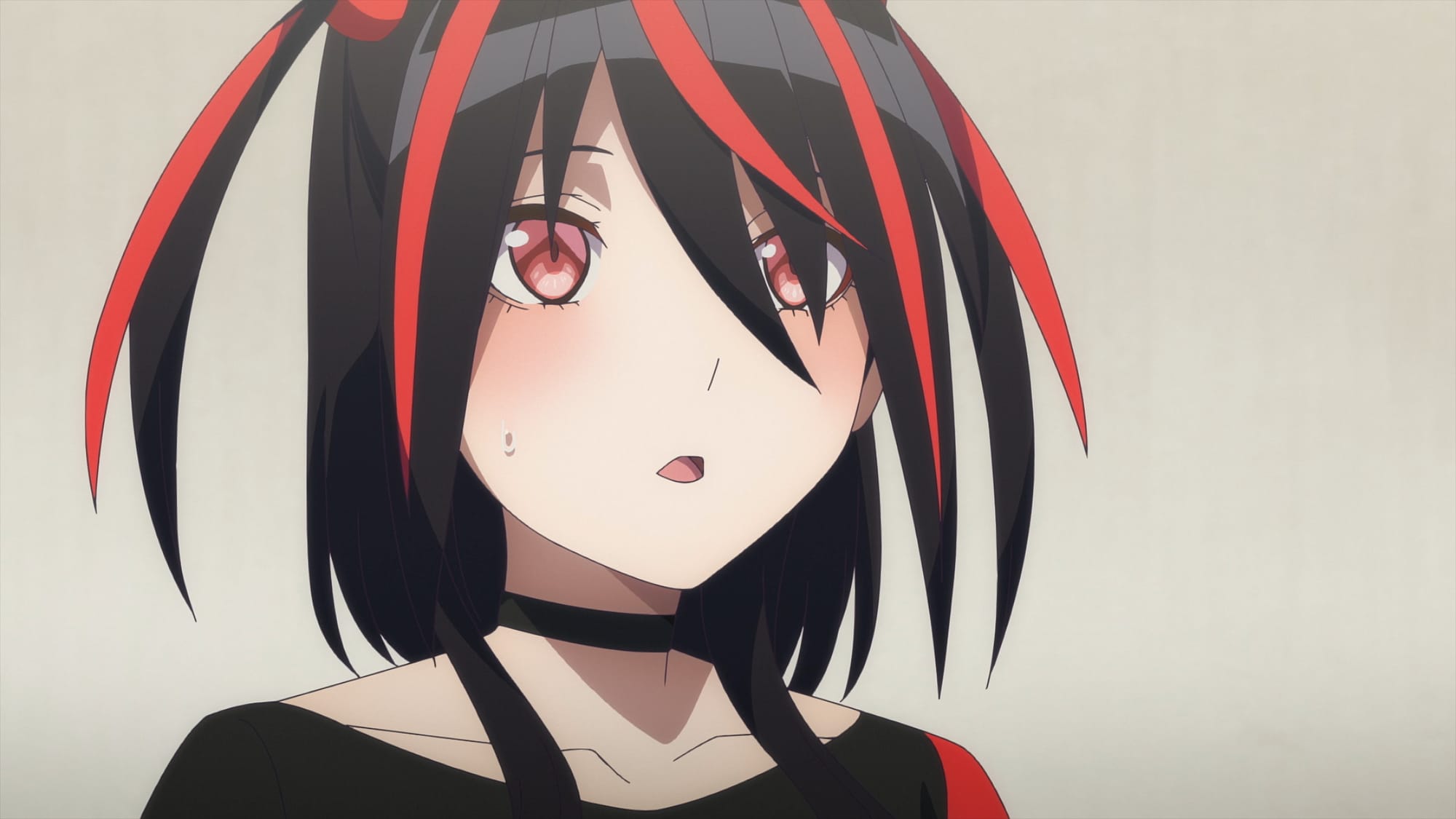
This name took me a while: it is a kanji pun based on “haneman”, one of the terms for a high score. The name Haneru (跳) is the same kanji used in “haneman” (跳満).
Chombo
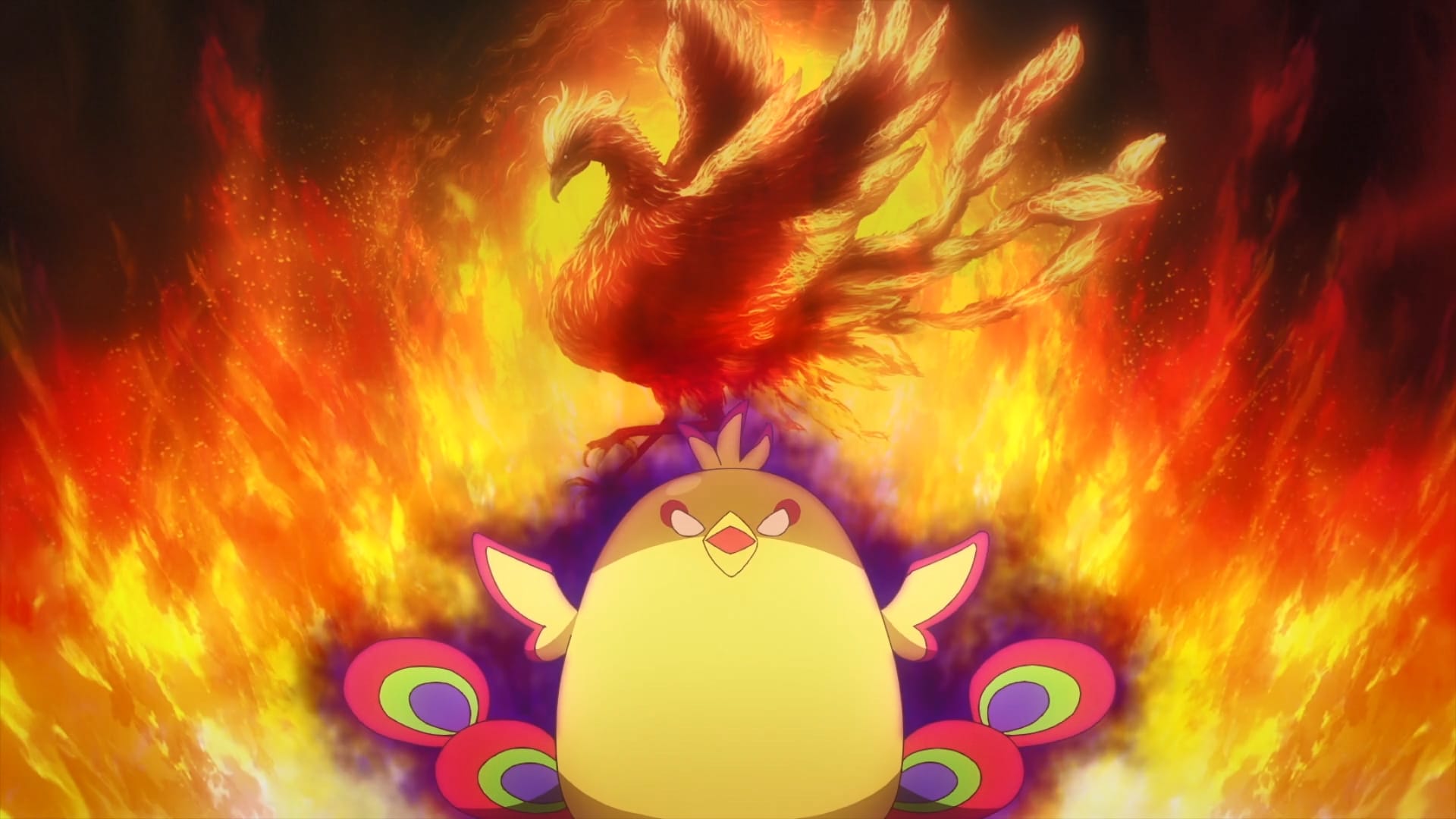
Chombo the mahjong spirit is obviously displeased to be named after a screw-up.
As is noted in the show, “chombo” is the mahjong term for a major foul, the kind so severe that it effectively messes up the round for everyone. An example of a chombo would be drawing from the wrong end of the wall, knocking over a bunch of tiles (you can get away with knocking over one by accident), or calling a win on a hand that isn't a winner.
Players who commit a chombo pay the value of a mangan to the table: 8000 for non-dealer and 12,000 for dealer. Since blowing the hand kept others from getting points, there's a steep price to pay.
Enforcement varies by how serious your table is. A good rule of thumb is not to make absolute beginners pay a chombo penalty if you ever want them to come back and play again. Playing at a real table is a bit more demanding than playing online, but online players pick up pretty fast.
It is generally not possible to chombo in online mahjong, where such choices are limited by the computer. If you go far back enough in riichi video games— like, to the Playstation 1 generation— you'll start to find mahjong games that will let you chombo.
Janta-kun
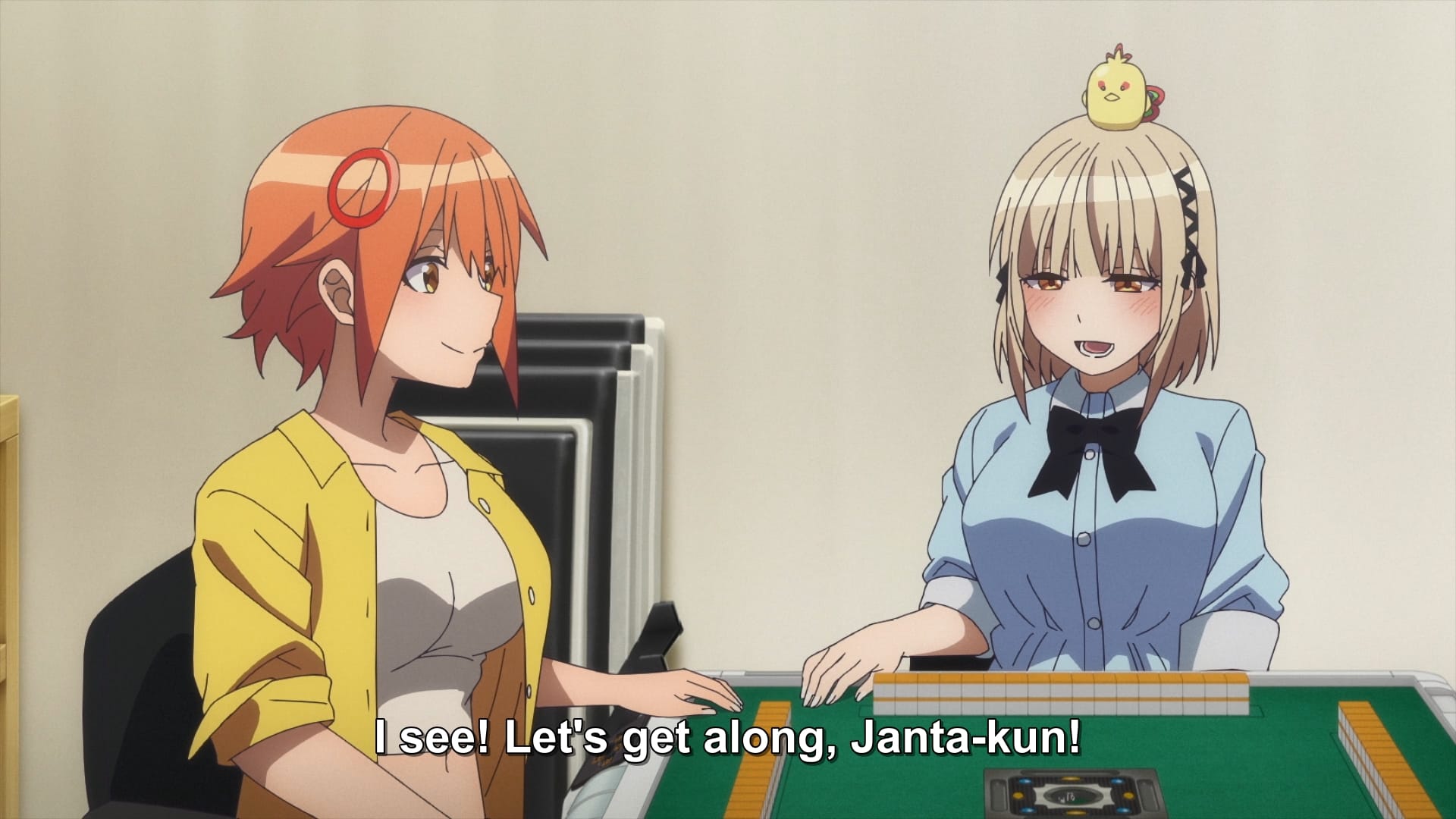
This is in dialogue in the show, but Janta-kun comes from “jantaku”, mahjong table.
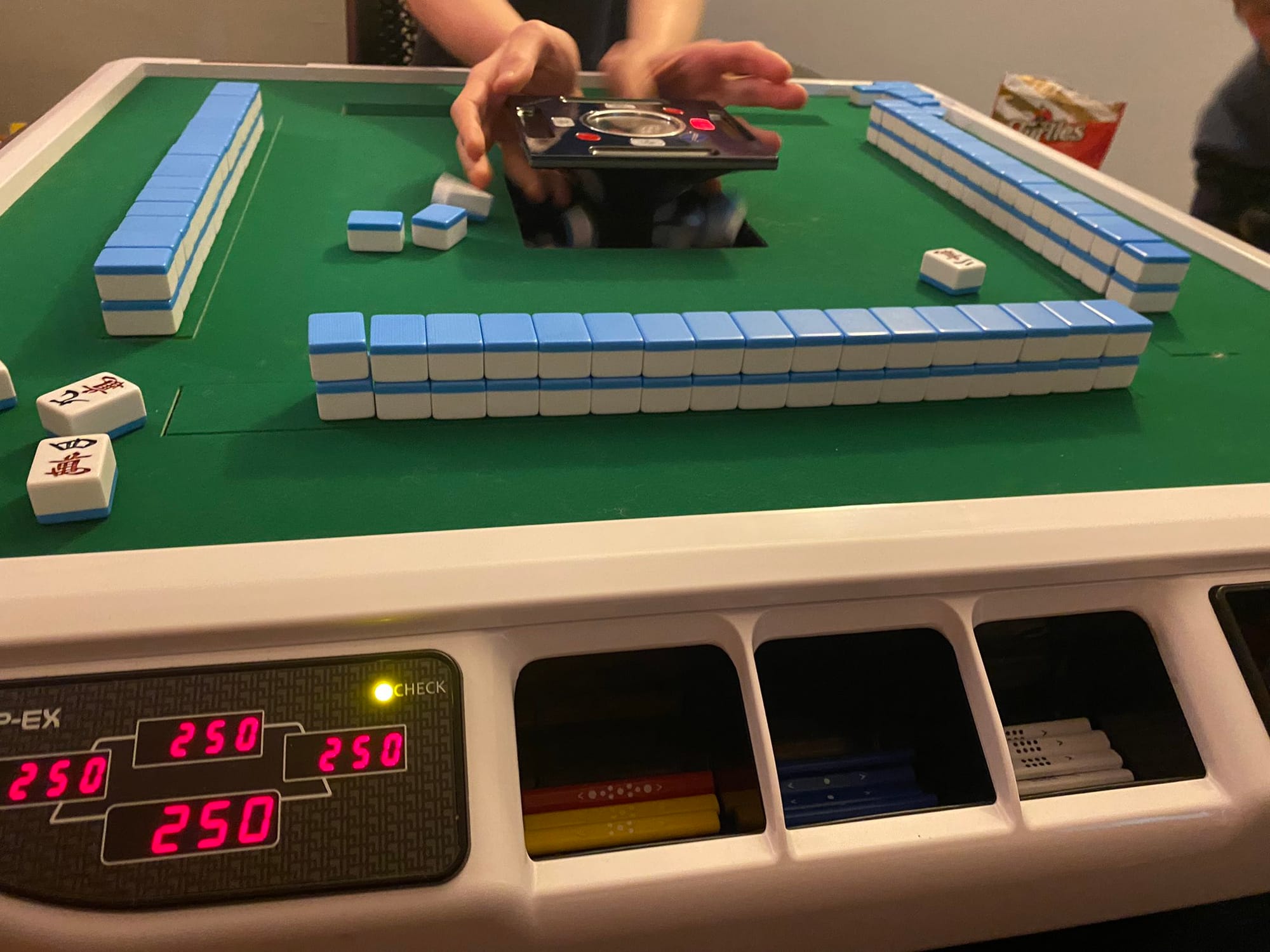
Janta-kun is based on the current standard for consumer automatic mahjong tables, the Amos JP-EX. If this were a real mahjong parlor they wouldn’t be using this table, but of course the people behind this show want to show you something you can buy. (I think Amos is a sponsor. They sure fave my tweets about the show.) If you have several thousand dollars, you’ve gotten tired of hand-shuffling tiles and want to play much faster games, and you want a steady stream of mahjong addicts showing up at your home for games, you might want an auto table.
Janta-kun differs slightly from the actual JP-EX you would buy. The score display is based on the older LED model: the table is now sold with a color LCD screen. There appear to be sliding covers on the scoring stick compartments, which I don’t think JP-EXes have even as an option. Finally, contradicting a gag in the show, the table does not play a pre-recorded “ding-dong! Riichi!” when someone puts a stick on the riichi stick holder. That’s for really fancy models like the Rexx.
And that's it for character names and background for Pon no Michi! Next post we'll be talking about the first episode: that post should already be up as you read this, so I hope you consider a paid subscription and continue the journey with me.
